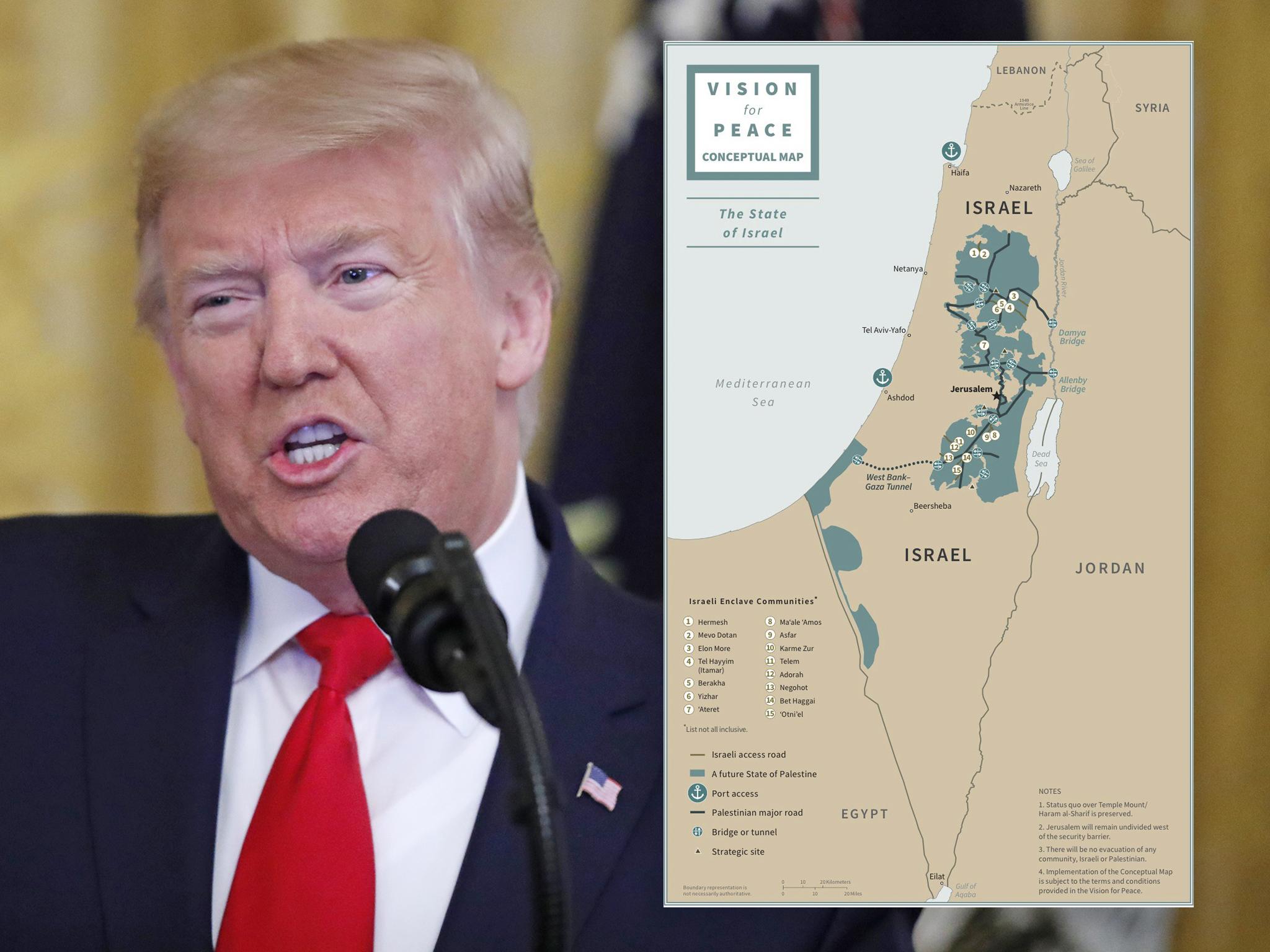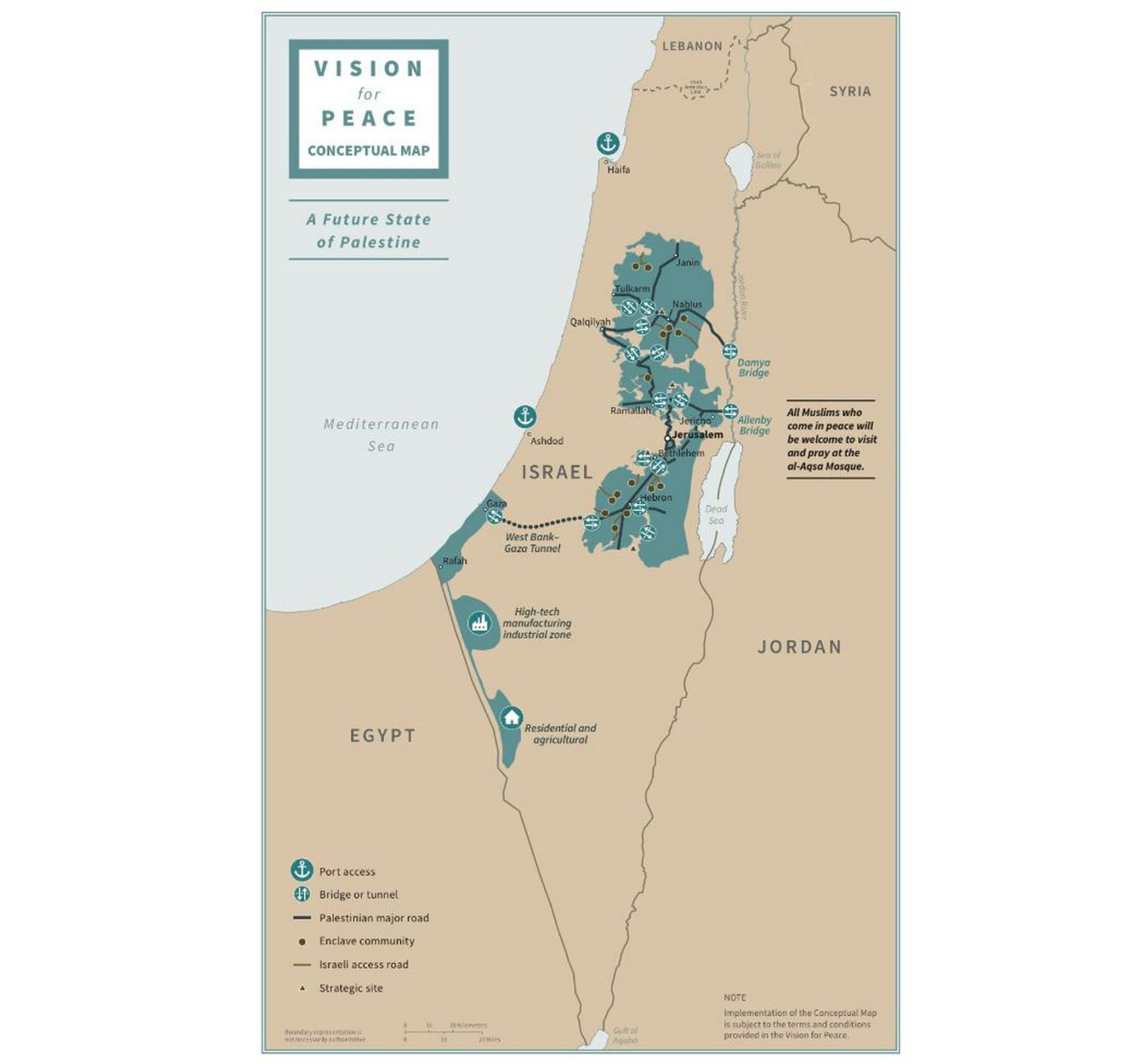Deal of the century or ‘path to apartheid’? Inside Trump’s divisive peace plan
Whether it's ratified or not, the plan erodes previously accepted principles of peace so far as to do them irreparable damage, writes Bel Trew


Your support helps us to tell the story
From reproductive rights to climate change to Big Tech, The Independent is on the ground when the story is developing. Whether it's investigating the financials of Elon Musk's pro-Trump PAC or producing our latest documentary, 'The A Word', which shines a light on the American women fighting for reproductive rights, we know how important it is to parse out the facts from the messaging.
At such a critical moment in US history, we need reporters on the ground. Your donation allows us to keep sending journalists to speak to both sides of the story.
The Independent is trusted by Americans across the entire political spectrum. And unlike many other quality news outlets, we choose not to lock Americans out of our reporting and analysis with paywalls. We believe quality journalism should be available to everyone, paid for by those who can afford it.
Your support makes all the difference.To rapturous applause on Tuesday, Donald Trump and his close friend, Israeli prime minister Benjamin Netanyahu, launched what they described as “the opportunity of a century” to fix one of the trickiest conflicts of our time.
The UK, the EU, Egypt and most of the Gulf states made noises of commendation, saying the 181-page peace plan was a workable starting point to jump-start long-dead negotiations.
But the fractured Palestinian leadership, in a rare moment of unity, condemned it as “nonsense” and a “conspiracy”. Israeli human rights groups, meanwhile, said that rather than building peace it "delivered apartheid". One said it was as “detached from reality as it was eye-catching".
So which is it?
This sprawling document, which has polarised opinion so dramatically, is almost bizarrely detailed in some respects. At one point, 100 pages in, it allocates funds for specific year-long Palestinian internships abroad.
At other intervals, however, it sweeps vaguely through some of the rawest issues at the centre of the conflict, such as what to do about the more than five million registered Palestinian refugees scattered across the globe who have, for decades, kept the right to return home so close to their hearts.
Few would, however, disagree with the idea that it is the most pro-Israeli vision for a solution to the Palestinian-Israeli conflict to come out of the White House.
It states that Jerusalem will be the undivided capital of Israel and that Israel can annex the Jordan Valley and nearly all its settlements in the occupied West Bank, although they are illegal under international law.
There will be land swaps and a cap on settlement expansion, but otherwise it appears to answer most of the key Israeli demands.
This is why Mr Netanyahu agreed to sign the document and called it the “best plan for Israel and the best plan for peace”. But it is also why it is doomed to remain just a “vision” – the Palestinians have roundly rejected it.
Instead, it serves another purpose. The plan erodes previously accepted principles of peace and the language which makes that up so far as to do them irreparable damage. By re-framing the terms of the conflict, it sparks a paradigm shift in attitudes towards what the baselines should be.
This peace plan, unlike the economic segment that Mr Trump’s son-in-law Jared Kushner launched last year, does anchor its vision on a two-state solution, the widely accepted way to resolve the conflict.
But the plan acknowledges that what constitutes a “state” for the Palestinians must and will change, and so with it the notion of self-determination.
“Sovereignty is an amorphous concept that has evolved over time” begins the section outlining the future state of Palestine, which is to have little to no control over its borders, internal security, airspace or sea.
“Pragmatic and operational concerns”, chiefly Israel’s security, must come first, the plan says.
If the Palestinians agree to sign the agreement, the new state of Palestine can enjoy $50bn of investment over the next decade.
Although the plan does not explain where that money will come from, the economic segment highlights an impressive array of investments in hospitals, waste facilities, roads, industries and education as well as into Israel and Palestine’s neighbours – transport links to Lebanon, power plants in Sinai and desalination projects in Jordan.
But aside from this carrot, it appears to be all stick. It is hard to see how the new state will have any sovereignty at all.
Israeli rights group B’Tselem goes as far as to compare Mr Trump’s vision to the Bantustans of South Africa’s apartheid regime, saying Palestinians will be “relegated to small, enclosed, isolated enclaves, with no control over their lives”.
Breaking the Silence, another such group, echoed these words, saying: “It is cementing occupation, fragmentation and discrimination which means apartheid”.
According to the plan, Israeli security forces will continue to be posted inside Palestine, which would have to be demilitarised. The same security forces will have control over all international crossings into the country.
Palestine, which does have a seafront in Gaza, will be permitted no seaports for now but rather “designated terminals” in Haifa Ashdod and, if the Jordanians agree, Aqaba.
The Israelis will have operational control over Palestine’s airspace. There will be no Palestinian airport. The Israeli navy will have the right to block prohibited weapons and weapon-making materials from entering Palestine. In practice this includes a number of goods, such as cables for solar panel, which are often banned under the “dual-use” argument despite having no military purpose.
Israel will have the right to launch incursions into Palestine, which will not have its own armed forces.
Expansion of Israeli settlements cannot continue, but demolition of Palestinian homes can if Israel deems the structures to pose a safety risk or if it is part of punitive measures following acts of terrorism.
The definition of key terms like refugee is questioned in the document. The right of return of any Palestinian refugee into Israel is forbidden.
Slipped into a sub-point on page 43 is that the Palestinian Authority must dismiss all pending actions against Israel in the International Criminal Court and all other tribunals. The ICC has said recently that it plans to launch an investigation into war crimes committed in the Palestinian Territories.
But it is the actual shape of the new country that speaks volumes.

Mr Trump’s map, which he tweeted out, shows a perforated foetus-shaped landlocked island within Israel, with the separate territory of Gaza and a thin string of villages south of it.
Palestinian neighbourhoods within Israel will be connected to each other via “corridors” that may be converted to high-speed trains.
Its capital will not be Jerusalem – a key demand of the Palestinians who want a return to the borders before the 1967 Arab-Israel war. Instead, the capital will be based in an eastern outskirt of the city, currently behind Israel’s controversial wall.
And so rights groups have roundly criticised the plan as much as the Palestinians.
Oxfam said it “undermines chances for just and lasting peace” while breaching international law.
Peace Now, an Israeli group, says it would not bring stability, instead giving “a green light for Israel to annex the settlements in exchange for a perforated Palestinian state.”
One of Mr Netanyahu’s first actions following the launch was to announce he would bring a proposal to annex Israeli settlements to his next weekly cabinet meeting.
This was initially supported by US ambassador to Israel David Friedman, who on Wednesday cycled back his enthusiasm a little by saying that the US and Israel would form a committee to determine details first before anything goes ahead.
However, it seems inevitable that annexation will happen soon.
Mr Friedman, who vehemently rejected the “apartheid” comparison, maintained that the Trump administration has done what no other administration has done before by producing a “hard offer”.
“Not diplomatic speak but a real, documented offer to… form a Palestinian state with defined borders,” he said. “I don’t think any other president has done more.”
Join our commenting forum
Join thought-provoking conversations, follow other Independent readers and see their replies
Comments